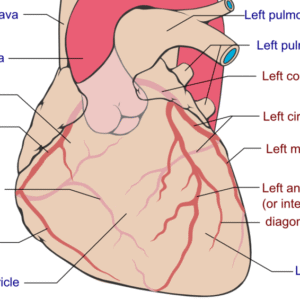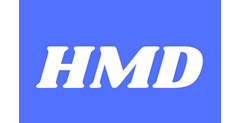Cardiology > Cardiac Tamponade
Cardiac Tamponade
Background
Cardiac tamponade is a life-threatening condition resulting from rapid or large accumulation of fluid in the pericardial sac, which compresses the heart and impairs ventricular filling. This leads to decreased stroke volume and cardiac output, culminating in obstructive shock if not urgently treated.
II) Classification/Types
By Onset:
- Acute: Trauma, aortic rupture, myocardial rupture
- Subacute: Malignancy, uremia, post-surgical
- Chronic (rare): Slowly progressive malignancy, chronic infection
By Etiology:
- Traumatic
- Iatrogenic (post-procedure)
- Malignant
- Infectious
- Autoimmune
- Uremic
III) Pathophysiology
As pericardial pressure exceeds intracardiac pressure (especially right atrial and ventricular pressures), diastolic filling becomes impaired. This reduces preload, stroke volume, and ultimately cardiac output. The extent of hemodynamic compromise depends more on the rate of accumulation than total volume.
IV) Epidemiology
- Any age group; more common in adults
- Causes vary by setting: Trauma and malignancy in developed countries; TB and purulent infections in low-resource regions
- Iatrogenic causes (e.g., catheter-based procedures) are increasing due to advanced cardiac interventions
Etiology
I) Causes
- Trauma: Penetrating chest injury, blunt trauma
- Procedural: Cardiac catheterization, pacemaker insertion, post-pericardiotomy
- Aortic dissection or rupture
- Malignancy: Lung, breast, lymphoma, leukemia
- Pericarditis: Viral, autoimmune (SLE), TB
- Uremia (ESRD)
- Post-MI: Free wall rupture (rare)
- **Anticoagulation-related hemorrhage into pericardium
II) Risk Factors
- Recent cardiac procedure or trauma
- Malignancy
- ESRD
- Pericarditis history
- Connective tissue disease
- Use of anticoagulants
Clinical Presentation
I) History (Symptoms)
- Chest pain (often pleuritic or pressure-like)
- Dyspnea, orthopnea
- Syncope or presyncope
- Weakness, fatigue
- Anxiety, agitation
II) Physical Exam (Signs)
Vital Signs:
- Hypotension, tachycardia, narrow pulse pressure
- May have pulsus paradoxus (>10 mm Hg drop in SBP on inspiration)
Classic Beck’s Triad:
- Hypotension
- Elevated JVP
- Muffled heart sounds
Other Findings:
- Clear lungs
- Cold extremities, delayed capillary refill
- Diminished peripheral pulses
- Tachypnea
- Altered mental status in severe cases
Differential Diagnosis (DDx)
- Tension pneumothorax
- Acute pulmonary embolism
- Cardiogenic shock
- Constrictive pericarditis
- Severe RV infarction
- Hypovolemic shock
- Severe asthma with pulsus paradoxus
Diagnostic Tests
Initial Tests
- ECG:
- Low voltage QRS
- Electrical alternans (QRS height varies with each beat)
- Sinus tachycardia
- Chest X-ray:
- May show enlarged cardiac silhouette
- Clear lung fields
- Echocardiogram (TTE):
- Key diagnostic tool
- RA and RV diastolic collapse
- Large pericardial effusion
- IVC plethora (dilated, no inspiratory collapse)
- Swinging heart (in large effusion)
Confirmatory/Supportive Tests:
- Cardiac catheterization (rarely needed):
- Equalization of diastolic pressures
- Elevated pericardial pressure
- Labs:
- CBC, CMP, troponins
- ESR/CRP
- Coagulation profile
- Pericardial fluid analysis (if pericardiocentesis is done)
Treatment
I) Emergency Management
- Immediate pericardiocentesis (bedside if unstable, echo-guided preferred)
- Volume resuscitation (IV fluids) to maintain preload
- Avoid diuretics or vasodilators until tamponade relieved
- Oxygen and monitoring in ICU setting
II) Interventional/Surgical
- Pericardiocentesis: First-line; both diagnostic and therapeutic
- Pericardial window: For recurrent effusions or loculated fluid
- Surgical pericardiectomy: For recurrent tamponade or constrictive pericarditis
III) Address Underlying Cause
- Malignancy: Pericardial sclerosis (e.g., with doxycycline) or pericardial catheter
- TB: Antitubercular therapy
- Uremia: Intensify dialysis
- Autoimmune: Immunosuppressive therapy
Patient Education, Screening, Vaccines
Education:
- Recognize warning signs: Chest pain, syncope, dyspnea
- Importance of compliance with treatment and follow-up
- Alert for recurrence in malignancy or autoimmune disease
Lifestyle:
- Avoid strenuous activity post-intervention
- Track weight, BP, and symptoms
Vaccinations:
- Influenza
- Pneumococcal
- COVID-19
- TB screening in endemic areas
Consults/Referrals
- Cardiology: Urgent evaluation and procedure
- Cardiothoracic Surgery: For window or pericardiectomy
- Infectious Disease: TB, bacterial or fungal cause
- Oncology: Malignant effusions
- Rheumatology: Autoimmune or inflammatory disease
Follow-Up
- Short-term: Monitor for recurrence via serial echocardiograms
- Post-intervention: Recheck pericardial fluid if suspicious etiology
- Chronic disease management: Manage malignancy, dialysis, or autoimmune condition
- Prognosis:
- Excellent with prompt diagnosis and drainage
- Poor prognosis if due to malignancy or delayed treatment
Related Articles

Stay on top of medicine. Get connected. Crush the boards.
HMD is a beacon of medical education, committed to forging a global network of physicians, medical students, and allied healthcare professionals.
